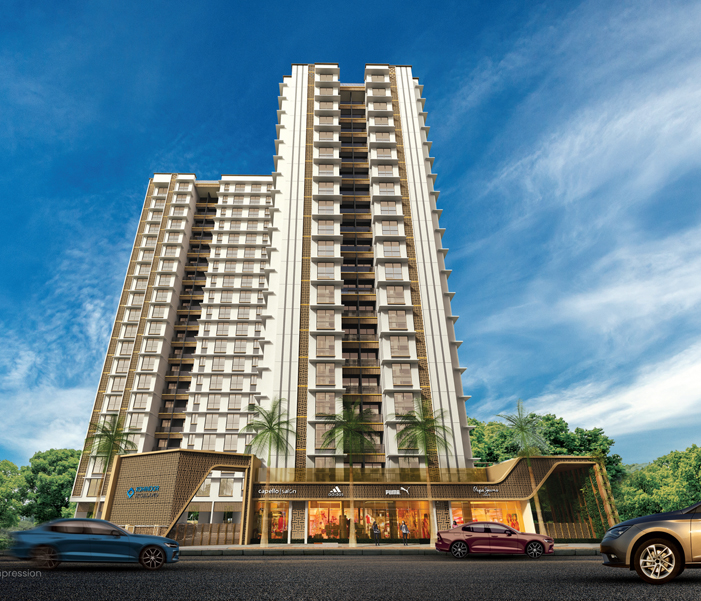
Homebuyers are usually separated between a ready and under-construction property when acquiring a property. Since both these property types serve and ensemble different purposes and intents with diverse tax implications, it is authoritative to know their advantages and disadvantages earlier. Here is a detailed guide to assist you in taking the decision.
Although purchasing an under-construction property has become one of the simple ways to own a home these days, it comes with certain dangers including, delayed control. Hence, amid the constant adjournments in project deliveries in the last few years, homebuyers have progressively started favouring ready units. But is one property type healthier than the other? Let’s take a look at the advantages and disadvantages of a ready and under-construction property below.
Advantages of purchasing an under-construction property:
Easier on the pocket
An under construction property does not hurt a purchaser’s pocket as much as a ready home does at the time of buying. If factors such as location, services, property size and builder are the same, a ready-to-move house is likely to price more than an under-construction one. The variance in pricing can vary by around 10-30 per cent.
Higher returns
Due to a longer window between the purchasing stage and the delivery schedule, investing in a property that is still under construction typically results in a larger return on investment. You have a strong possibility of making a profit on your capital investment if you sell the property soon after taking ownership.
RERA Compliance
Any property that had an occupancy certificate (OC) as of May 1, 2017, had to be compelled to register with the state's real estate regulatory agency (RERA). Thus, properties that are still under construction must be compliant with fair trade standards and fall under the purview of RERA. Purchasers can get information about these properties on the State's RERA website and even request quick resolution of their complaints from the Appellate Tribunal established under RERA.
Advantages of a ready-to-move-in property
Immediate availability
One of the main advantages of a ready unit is immediate possession. Homebuyers need to make the payment, go through the papers work and move in. This also saves them from the double burden of compensable rent and the Equated Monthly Instalments (EMI) simultaneously, in the case of a home loan.
You get what you see
In the case of a ready unit, homebuyers get to actually see the completed product and get what they have paid for. As the unit is ready for you to inspect before you finalise the acquisition, there are lesser chances of inconsistencies with the promised layout, features, and facilities, among other significant things.
Free from GST Implication
The Goods and Services Tax (GST) charges up to five per cent tax on the purchase of under-construction properties. Ready properties, however, are left out of the realm of GST.
Disadvantages of an under-construction property
Higher risk
There is considerable risk elaborate with investing in a project that is still in the development phases. The builder has occasionally failed to deliver on time or, in more extreme cases, not at all. This can be attributed to a variety of issues, including a lack of funding, rising building supply costs, and rising borrowing rates, among others. Hence, before making an investment in a project that is still in the development stages, it is advisable to do your homework on the builder.
The discrepancy in the final product layout/features
The risk of not receiving the promised product at the time of possession is one of the most frequent issues connected to homes that are still under construction. Common inconsistencies include a layout modification, a smaller usable area than promised, and a lack of facilities.
GST implication
Acquiring an under-construction property attracts a tax incidence of one or five percent of the total cost of the property. While one per cent GST is owed on affordable homes priced under Rs 45 lakh, it is priced at 5% in the case of properties priced above Rs 45 lakh. With further stamp duty and registration prices applicable, such properties result in heavy expenditure on taxes.
Tax implications
Loans that are associated with specific tax benefits under Sections 24, 80EE, and 80C of the Income Tax Act are typically used by buyers to finance their house purchases. Once the buyer has taken possession and the uses under these necessities are in effect, only properties that are ready to move into are qualified. Five equal payments starting with the year of proprietorship are permitted for the tax uses on the interest paid while the property was being built.
Disadvantages of a ready-to-move-in property
High cost
One of the clearest drawbacks of buying a ready to move property is the higher cost associated with an under-construction property. As builders provide a completed home without any delay, they charge a premium on such properties.
Quality of construction
Homebuyers have the opportunity to periodically examine the construction quality when purchasing a property that is still under construction by analysing the work in progress. Among other important factors, buyers can examine the materials used, the stability of the foundation, and the structural integrity. You cannot do any of these checks on a ready unit, though.



Recent comments(0)